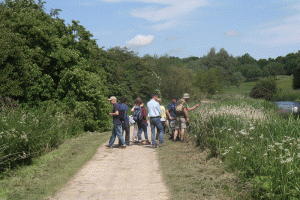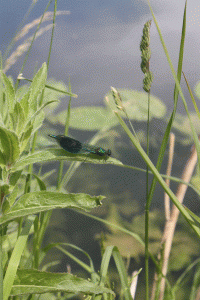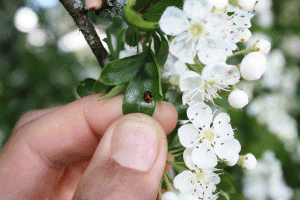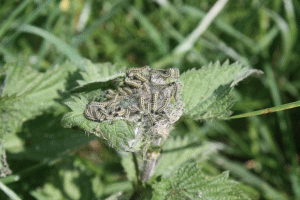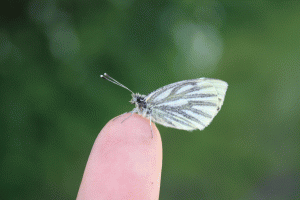
Buglife and TCV have provided me with numerous opportunities over the past 6 weeks, all of which have added greatly to my understanding of ecology, conservation and community engagement.
One of the main activities I have been doing is leading guided bug walks at different sites in Glasgow. The bug walks have taught me, and hopefully some attendees, a huge amount about invertebrates and their habitats. The world of invertebrates and their associations to plants is vast – perhaps 8 out of 10 species worldwide are invertebrates, AND, if you lined up all species side by side, 1 in 4 would be a type of beetle – so to begin to understand how these associations function in our environment has been invaluable to me. We have encountered a number of beautiful, charismatic and important species along the way, such as Blue Banded Damselflies, Bumblebee Mimic-ing Hoverflies, numerous solitary bee species, stunning iridescent Leaf Beetles (such as the White Dead Nettle Leaf Beetle) and Nettle Weevils. What is striking to me is the beauty that can be found in such species, and all so close to home.
Another focus of the traineeship in recent weeks has been learning about managing habitats (specifically Grasslands and Woodlands) for invertebrates. I have discovered that there is a huge body of knowledge and skill required to maintain habitats in ways that support a wide range of invertebrates; that management goes beyond a prescriptive science and is more of a craft and an art. To take an example, many of us have thought of, or have started, creating a wildflower meadow patches (big or small). It appears, at first, that this is as easy as sowing some wildflower seed and waiting for beautiful flowers to appear. On the one hand this is sort of true; by sowing some seeds and providing food for many pollinators we are beginning to positively contribute to the lives of many species, including important ‘bottom of the food chain’ species. In this sense, I feel wildflower activities should be strongly encouraged. On the other hand, however, there is much more to creating high quality, long lasting wildflower meadow patches than just sowing seed. This is something that should not be underestimated as a poor quality meadow or, a meadow that is abandoned after a year or two, may not be providing the positive impact we think it is. The knowledge required to produce good meadows is, at the moment, not so easy to dig out, but it needs to come alongside the growth in awareness of pollinator declines.
Creating small to large grassland meadows, for example, might be affected by variation in soil conditions, the type of seed used, the time of year the seed is sown, how the flowers/meadow is cut or grazed by rabbits (or livestock if in the countryside), what species of pollinators are in the area, the hydrology of the site and what plant communities exist around the meadow. All of these factors provide an exciting challenge to anyone trying to create a meadow that allows for mistakes and learning along the way, especially when your meadow doesn’t look anything like you expected and you try to work out why that might be.
The months continue to whiz by and the next 8 weeks are still very busy for me. I will be continuing with the bugwalks, consolidating my knowledge of invertebrates and looking to set up a project myself as the year winds along.

